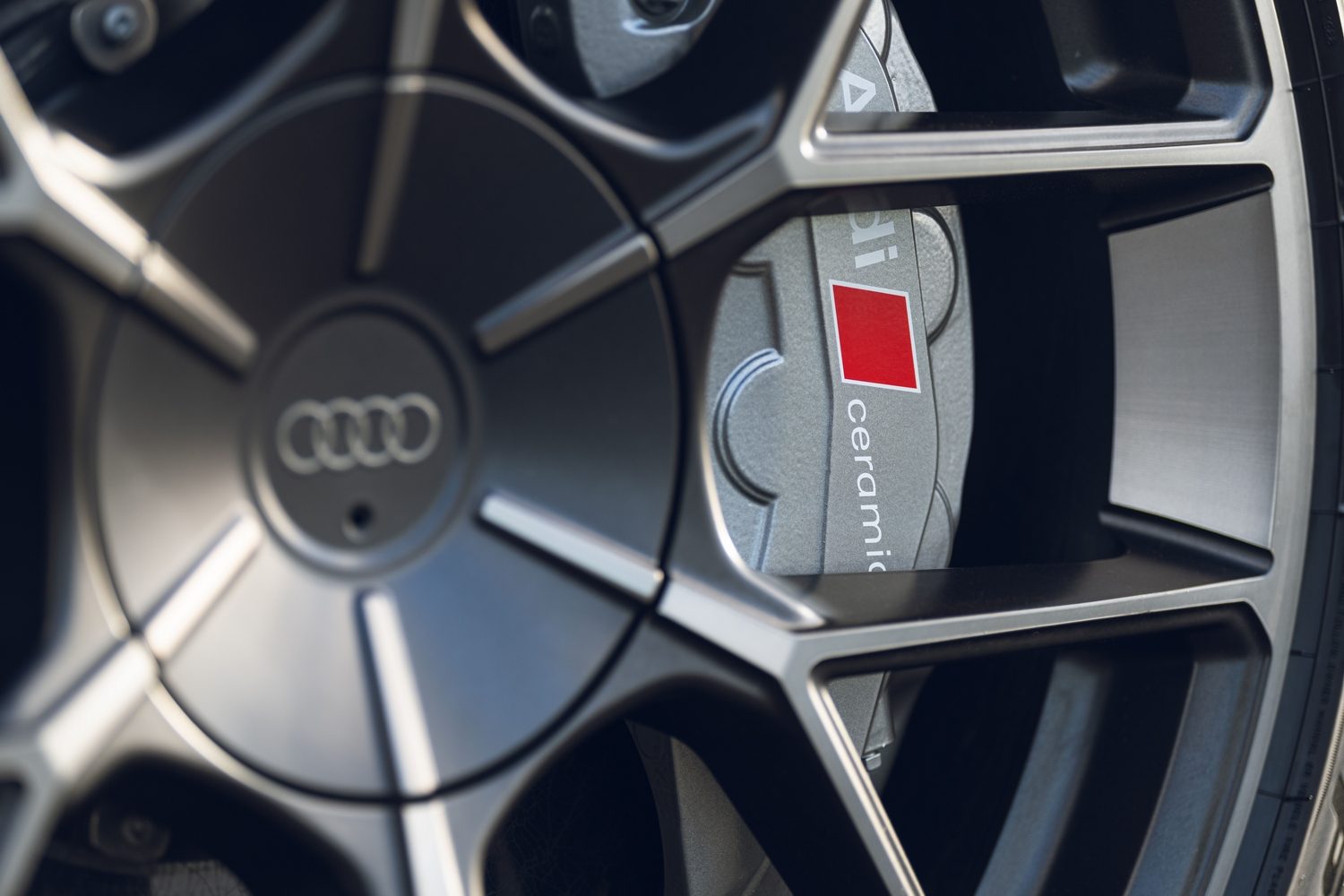The Audi RS e-tron GT, it seems, just wasn’t powerful enough. So, with the arrival of the updated e-tron GT, the range has grown to incorporate a new performance model with a staggering 925hp from its two electric motors. But is there any point in shoving so much power into a sports saloon with half an eye on long distance comfort? We’ve already sampled the S e-tron GT on Irish roads, so we’re now getting our hands on the range-topping RS e-tron GT performance for the first time, tested in the UK.
What does the new Audi RS e-tron GT performance look like?
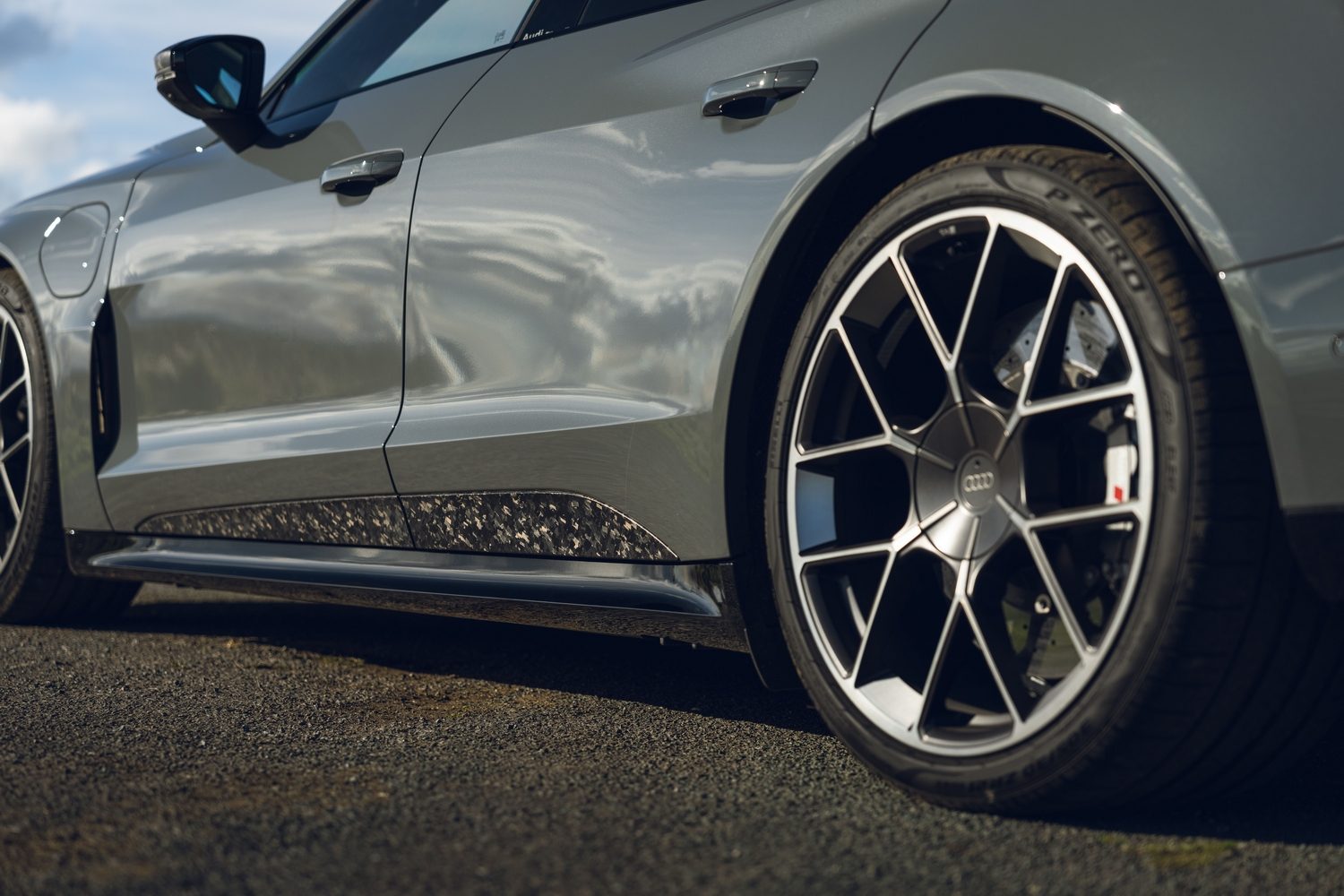
At first glance, the performance version of the RS e-tron GT doesn’t look all that different from a more conventional variant. The bodywork is much the same shape, complete with much the same new-look grille as the S e-tron GT, and the bumper design from the RS e-tron GT. However, it gets its own dark carbon roof, and it’s offered with optional carbon ‘camouflage’ trim on the bumpers, door trim, diffuser and door mirrors.
Overall, the look is quite subtle for this range-topping model, but the e-tron GT has always drawn attention. The image is ultra-modern, and the design is slightly divisive - some will think the Porsche Taycan is a prettier interpretation of the electric sports saloon - but it’s definitely impactful, and the performance model does nothing to change that impression.
A look inside the Audi RS e-tron GT performance
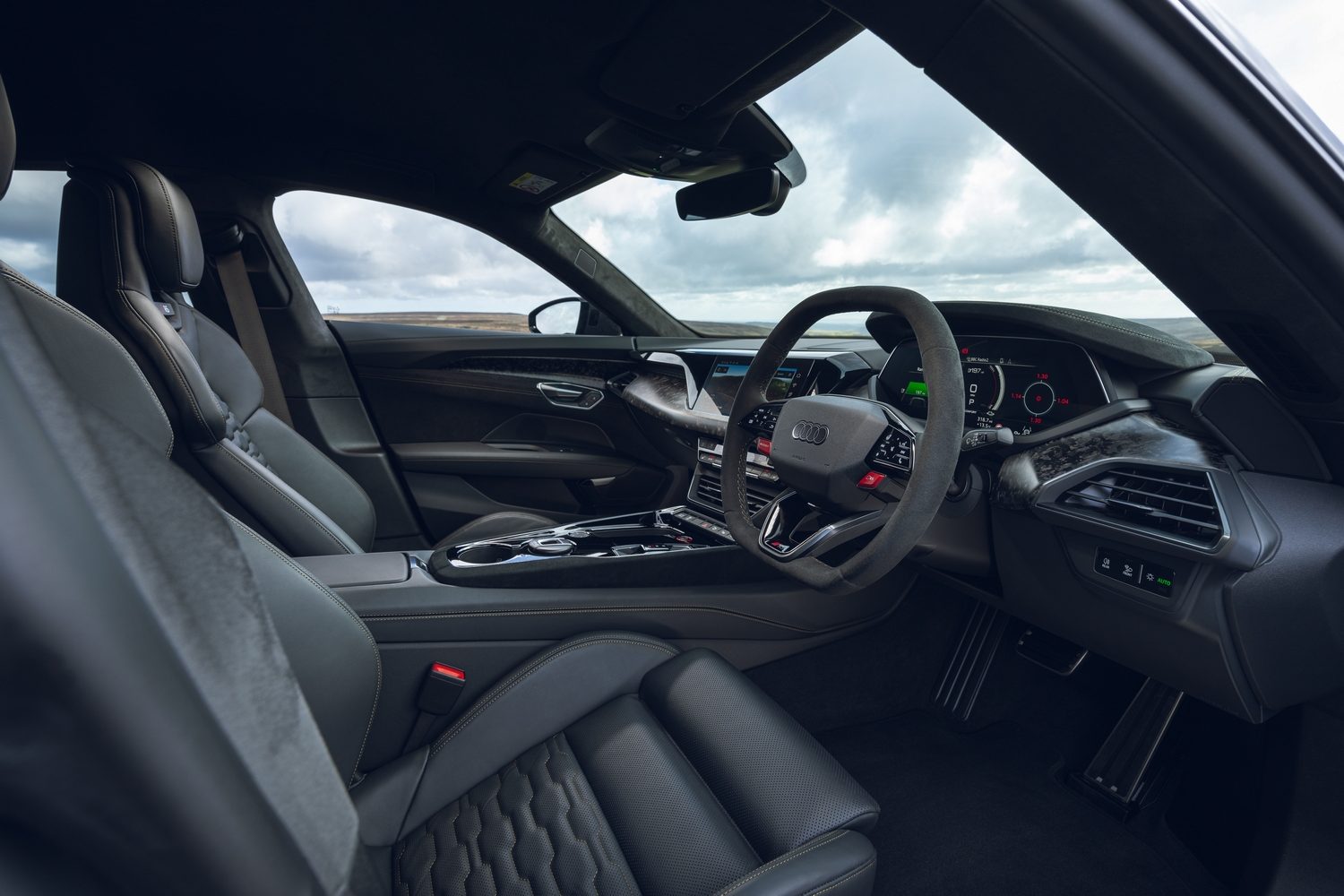
Just as the performance version of the e-tron GT is little different from its siblings on the outside, the interior design has also remained largely unchanged. Not that we have a problem with that, because it’s a cool place to be, and you’re surrounded by technology. It’s also fantastically well made, with lots of upmarket materials that have been bolted together almost perfectly to make the e-tron GT’s cabin feel solid and strong.
Perhaps the design isn’t especially imaginative, but it’s made with ergonomics in mind, and every button is exactly where it should be, while the driving position is excellent.

Sure, the decor is more of a mixed bag, with our test car getting the camouflage-pattern dashboard insert to match the external trim, and bold green stitching. But the sporty seats are really supportive and yet comfortable, while the oddly shaped steering wheel feels better to hold than it looks.
Space isn’t especially generous by the standards of most four-door saloons, though, with a lack of headroom in the rear and just 350 litres of boot space behind the back seats. Admittedly, there’s an extra 81-litre luggage bay under the bonnet, but even so, the Audi isn’t that flush for carrying capacity. However, when you compare it with similarly fast cars, rather than just similarly shaped ones, the Audi’s credentials look a little better. With real back doors and seats a human - if not an especially large one - could occupy for more than half an hour, it looks pretty practical alongside other cars that do 0-100km/h in less than three seconds.
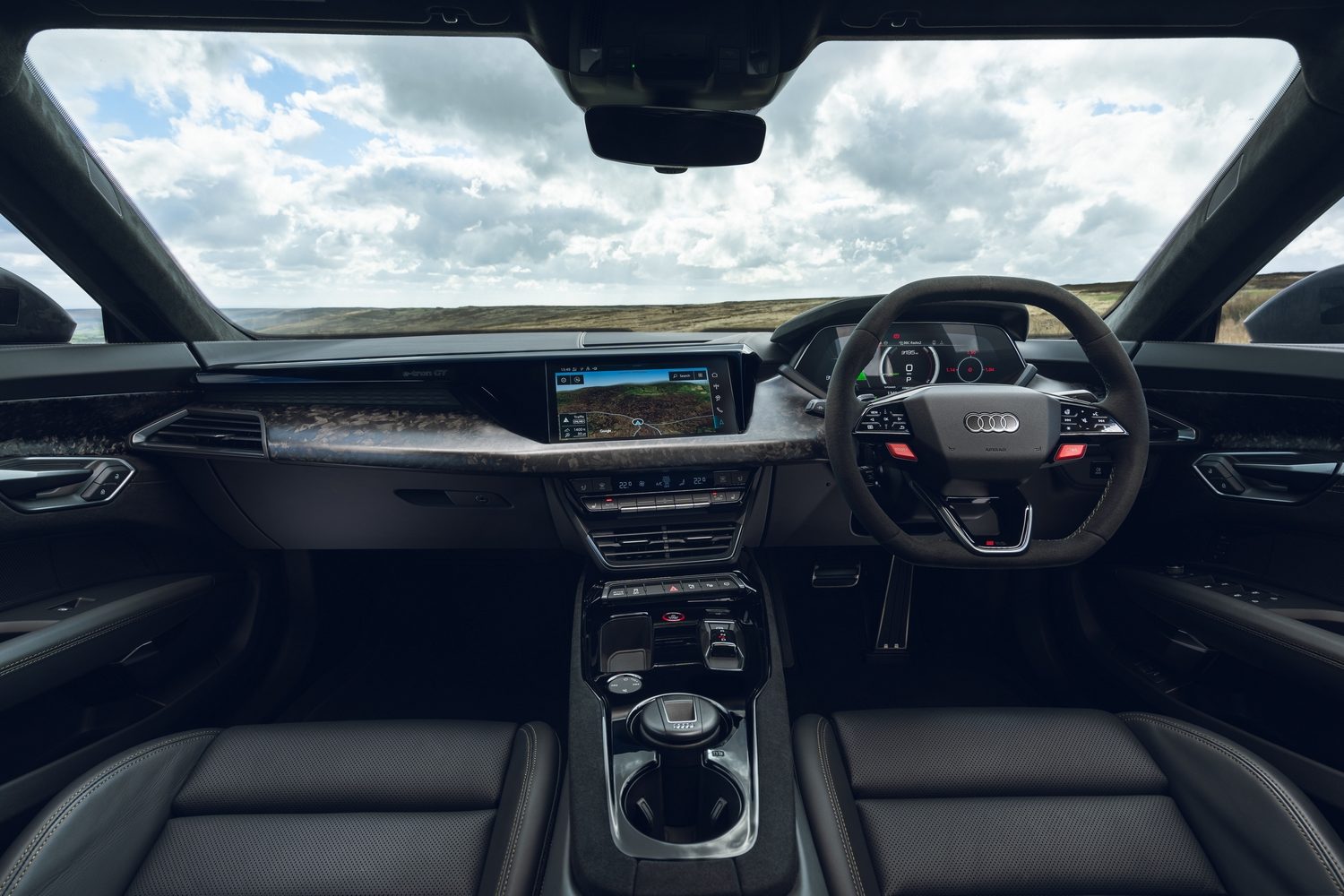
The Audi RS e-tron GT performance’s on-board technology
As is so often the way with Audis, there’s a lot of focus on technology inside the RS e-tron GT performance’s cabin. You get two screens, with a massive configurable digital instrument cluster behind the steering wheel and a big central touchscreen as the centrepiece of the dashboard.
Both screens look modern and have sharp displays, but the Virtual Cockpit instrument cluster is the highlight thanks to its configuration options that allow you to see pretty much any data you want in front of you. And because you can tweak the view, you can see that data in whichever way you want, too.
But that doesn’t take anything away from the central touchscreen, which is logically arranged and easy to use. The processor is fast, and it comes with all the tech you really need, including the Apple CarPlay and Android Auto smartphone integration technology.
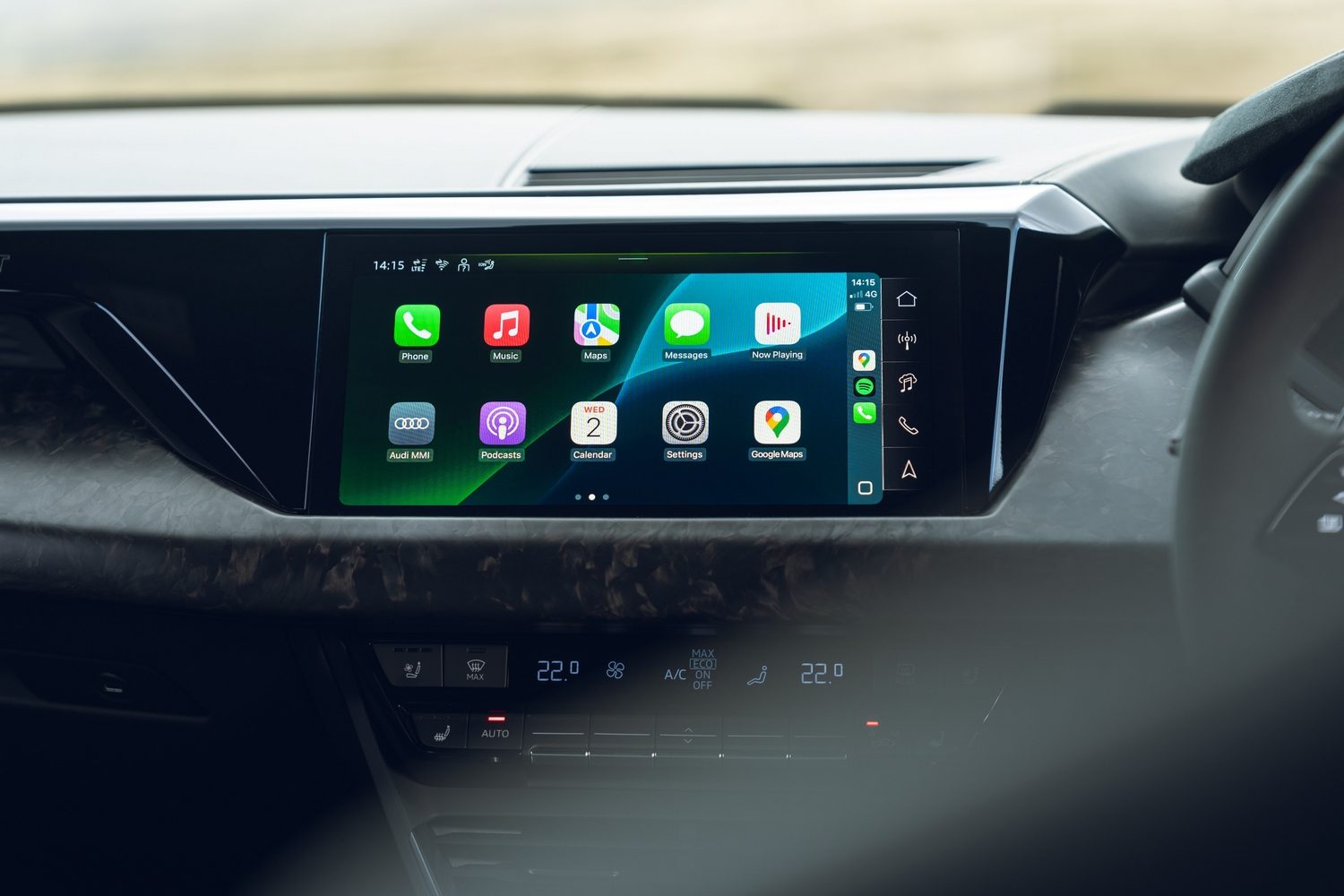
And while it’s true that some of the RS e-tron GT performance’s safety technology is a bit irritating at times, it’s easy enough to access and to switch off the systems that annoy you most, and that should allay most drivers’ concerns on that front.
How fast is the Audi RS e-tron GT?
Like every other RS e-tron GT model, the performance comes with two electric motors - one to drive the front wheels and another to drive those at the rear - creating a high-performance all-wheel-drive powertrain. However, unlike the other RS e-tron GT variants, the performance’s motors combine to churn out up to 925hp, and that gives it a startling turn of pace.
Officially, the performance version of the RS e-tron GT does 0-100km/h in just two-and-a-half seconds. That’s genuine supercar acceleration, because the old Audi R8 couldn’t manage that, and nor can the Ferrari 296 GTB.

And the remarkable thing about the RS e-tron GT performance is that the acceleration is not just remarkable from a standing start. Because of the nature of electric motors, the system will also allow you to access the car’s full capability at seemingly any time, making it a thoroughly impressive car to overtake with. Squeeze your right toe and the Audi hurtles past anything in its way.
That performance is partially dictated by the driving modes, which change the responsiveness of the accelerator pedal slightly. But even at its most economical, the RS e-tron GT performance still offers outrageous pace; it’s just even more incredible in the sportier settings. And because the power is split between the two axles, the delivery is generally pretty stable, as long as the road isn’t too greasy.
All this means the performance version of the RS e-tron GT is far from the most efficient option out there. The battery measures 105kWh, but only 97kWh of that is usable, so the official range is between 533km and 592km. However, we’d be surprised if any owners managed such impressive efficiency, if only because they’ll be tempted into using the car’s ample power at any opportunity.

Thankfully, the battery will charge at up to 320kW with the help of a suitable DC charging point, which means it takes 18 minutes to charge from 10 to 80 per cent under favourable circumstances. Perhaps you won’t see that sort of speed very often in the real world, due to weather and other variables, but it does mean you can add a useful amount of range, even during a relatively short coffee stop.
Driving the Audi RS e-tron GT performance
The power is naturally one of the key draws of this performance version of the RS e-tron GT, but it’s more than just a drag racer. Audi has updated the e-tron GT range’s chassis for 2025, with new air suspension fitted to the performance model as standard, while torque vectoring and all-wheel steering help to make the car agile and stable.
We would love to say the effect was profound, but for most of the time, the performance doesn’t feel all that different from the S e-tron GT. After all, the S has plenty of poke to spare, so you don’t immediately notice the straight-line speed of the performance car, and though the ride is firmer, the difference is not night and day.
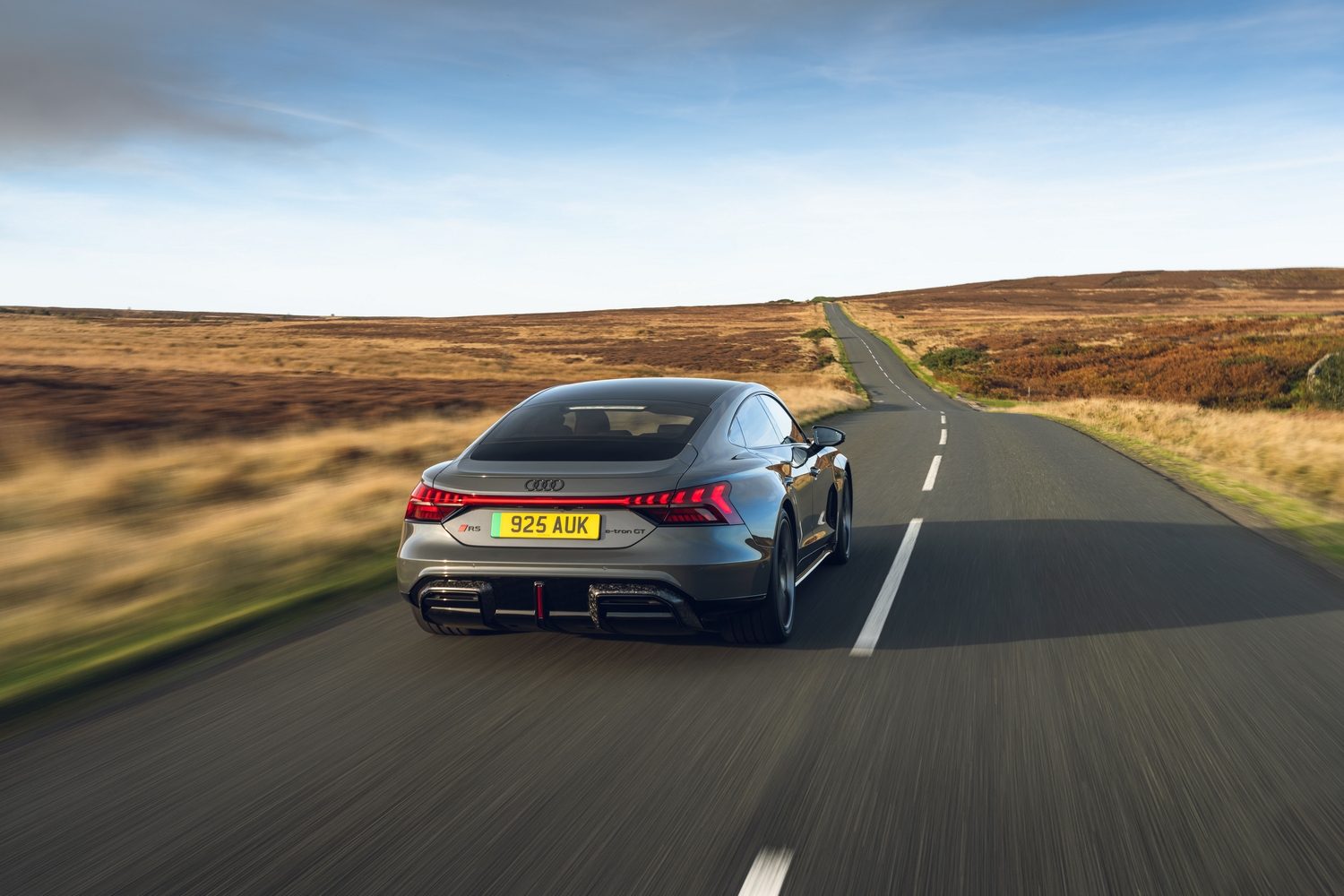
If we’re honest, the biggest difference is the way the car shoots up slightly when you open it, as though it’s suddenly lifted by invisible jacks. The idea is to make it easier to get in and out, but the effect is quite startling if you aren’t expecting it.
Once you’re in, the usual e-tron GT characteristics remain, with light yet direct steering and sharp responses from the car’s nose. The four-wheel steering only increases the agility at lower speeds, and it’s designed to make the car more stable when you drive faster. But the differences between the performance and other models only shines through when you start using that capability.
Pitch the car into corners and the suspension keeps it unbelievably level, while the combination of torque vectoring and all-wheel steering makes it relatively easy to maintain your line through a corner. Where other versions of the GT feel more like grand tourers with their softer, less focused gaits, the performance feels as though it has upped the ante, bringing it closer to the normally sportier Taycan in terms of attitude.
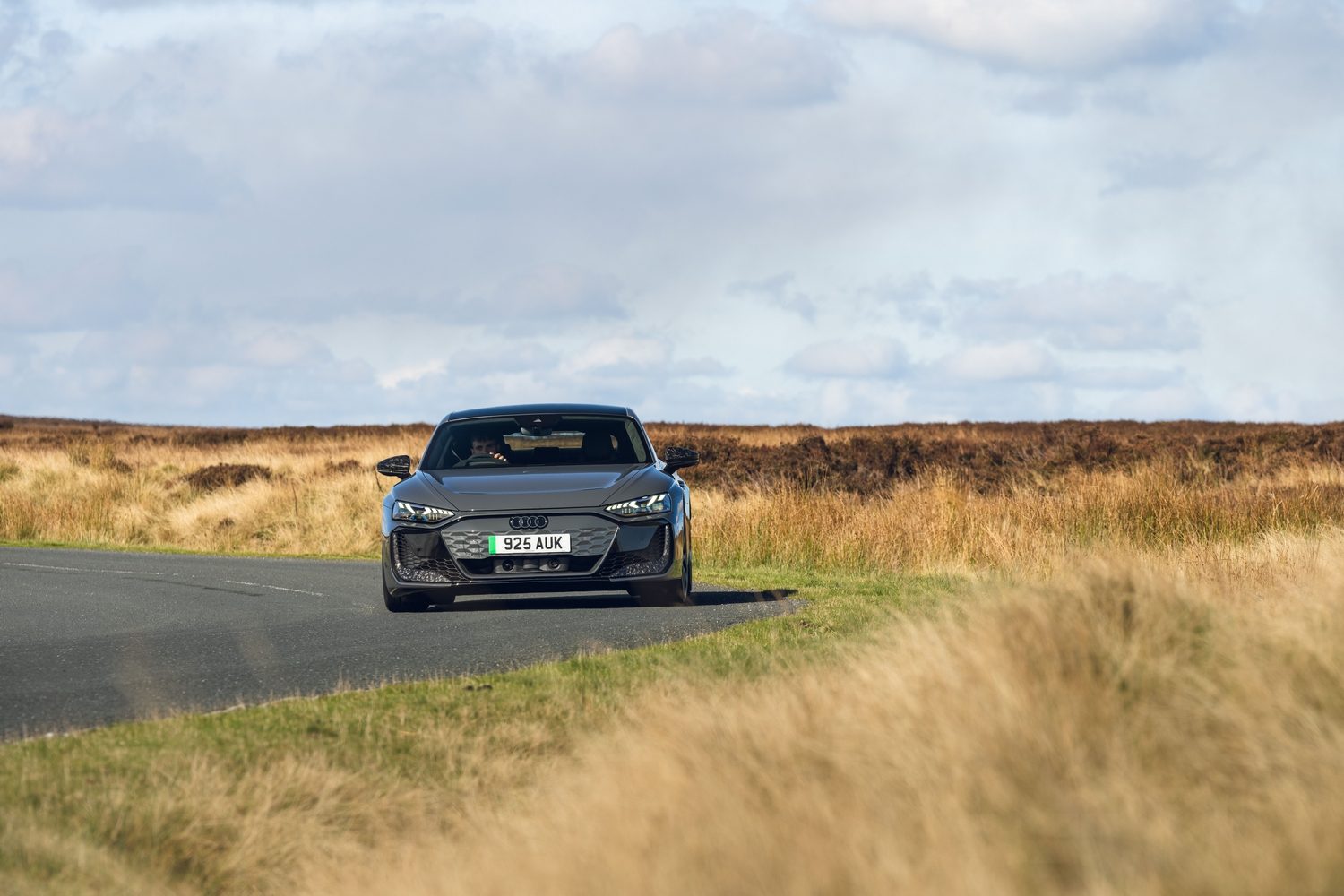
That attitude is only reinforced by the brakes, using carbon-ceramic discs designed not to fade when they get hot, effectively guaranteeing brake performance no matter what. Normally, such brakes sacrifice feel for performance, and though the Audi’s brakes aren’t perfect, they have immense stopping power and there’s no sense that the callipers are competing with the regenerative braking system, which is often the way with electric cars.
Combine that with the performance’s handling and this Audi gives you huge confidence in its abilities, allowing you to exploit its capabilities. Whatever, the result is a fantastic four-door sports car that’s beautifully planted and rides just about acceptably on the road but has a sharpness that’s missing from lowlier e-tron GT models.
How much does the Audi RS e-tron GT performance cost in Ireland?
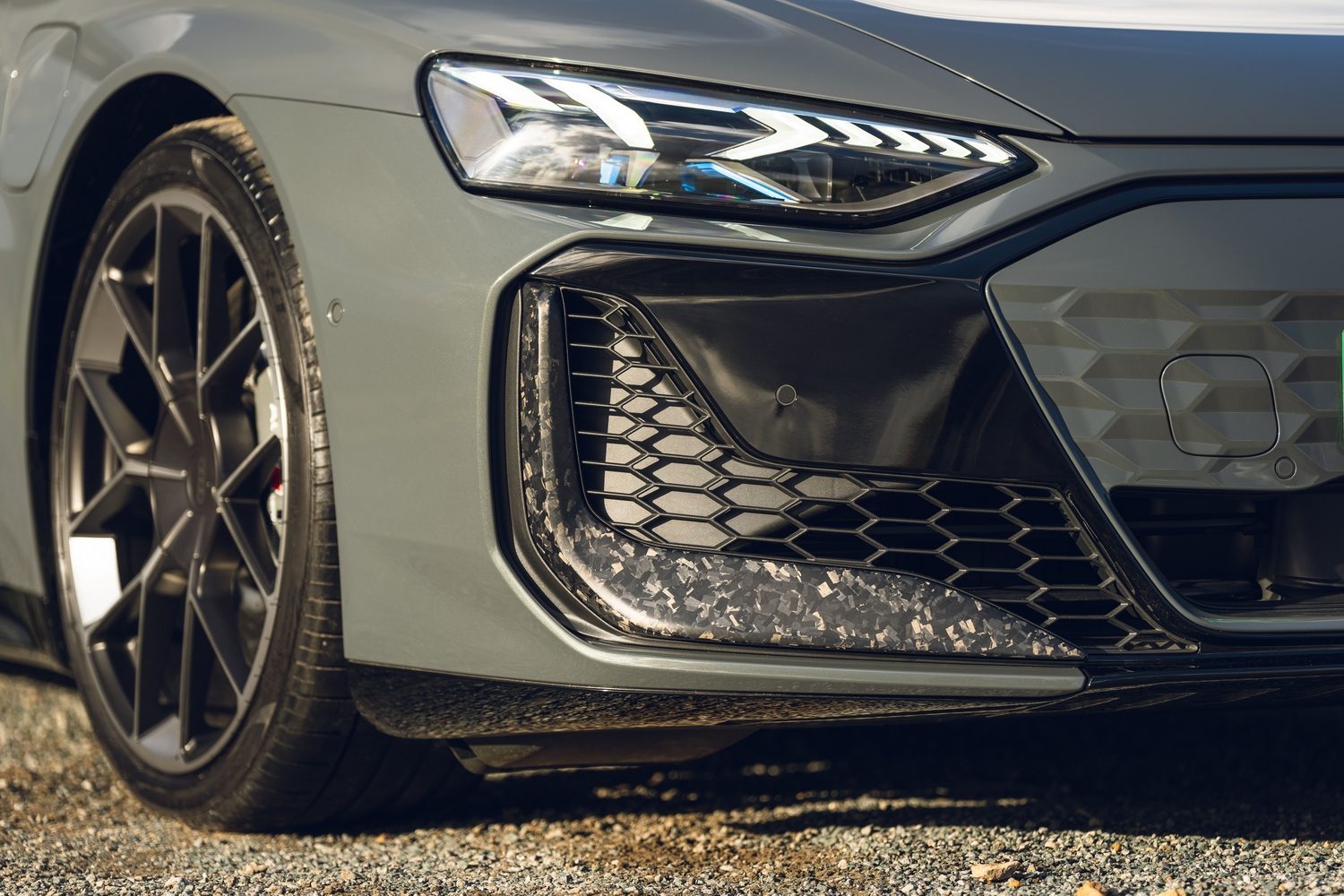
At €177,650, the RS e-tron GT performance is hardly cheap, but in context, it isn’t quite as expensive as it sounds. For a kick-off, it’s only a little over €14,000 more than a conventional RS e-tron GT, and for something as fast as this, a smidge under €180,000 is comparatively cheap. In comparison, even a basic Porsche 911 Carrera, which is nowhere near as quick as the Audi, costs almost €20,000 more.
Then there’s the question of standard equipment. All RS e-tron GTs come with cool sports seats, a digital instrument display and a central touchscreen, but the performance adds to that with green interior stitching, while the interior inlays can be specified in the same carbon camouflage colour scheme as the exterior trim. Admittedly, it isn’t a huge leap in technology or style on which to spend €14,000, but as the name suggests, that money is really paying for the seemingly limitless power and performance.
The reasons you’d buy an Audi RS e-tron GT performance

The performance version of the RS e-tron GT is wholly unnecessary, but that doesn’t prevent it from being wholly impressive. There’s no real reason for choosing one over any other version, unless you desperately want to show off, but our inner child kind of appreciates that. And anyway, while the acceleration is quite the party piece, the handling means you won’t get bored once the novelty of the power has worn off.
Ask us anything about the Audi RS e-tron GT performance
If you want to know more about the Audi e-tron GT models, or any other car in Ireland, why not try our Ask Us Anything service? Just head to the page on our website, post your question and sit back while our team of experts set about answering your query. We can help you make your next car-buying decision and we do it completely free of charge.



